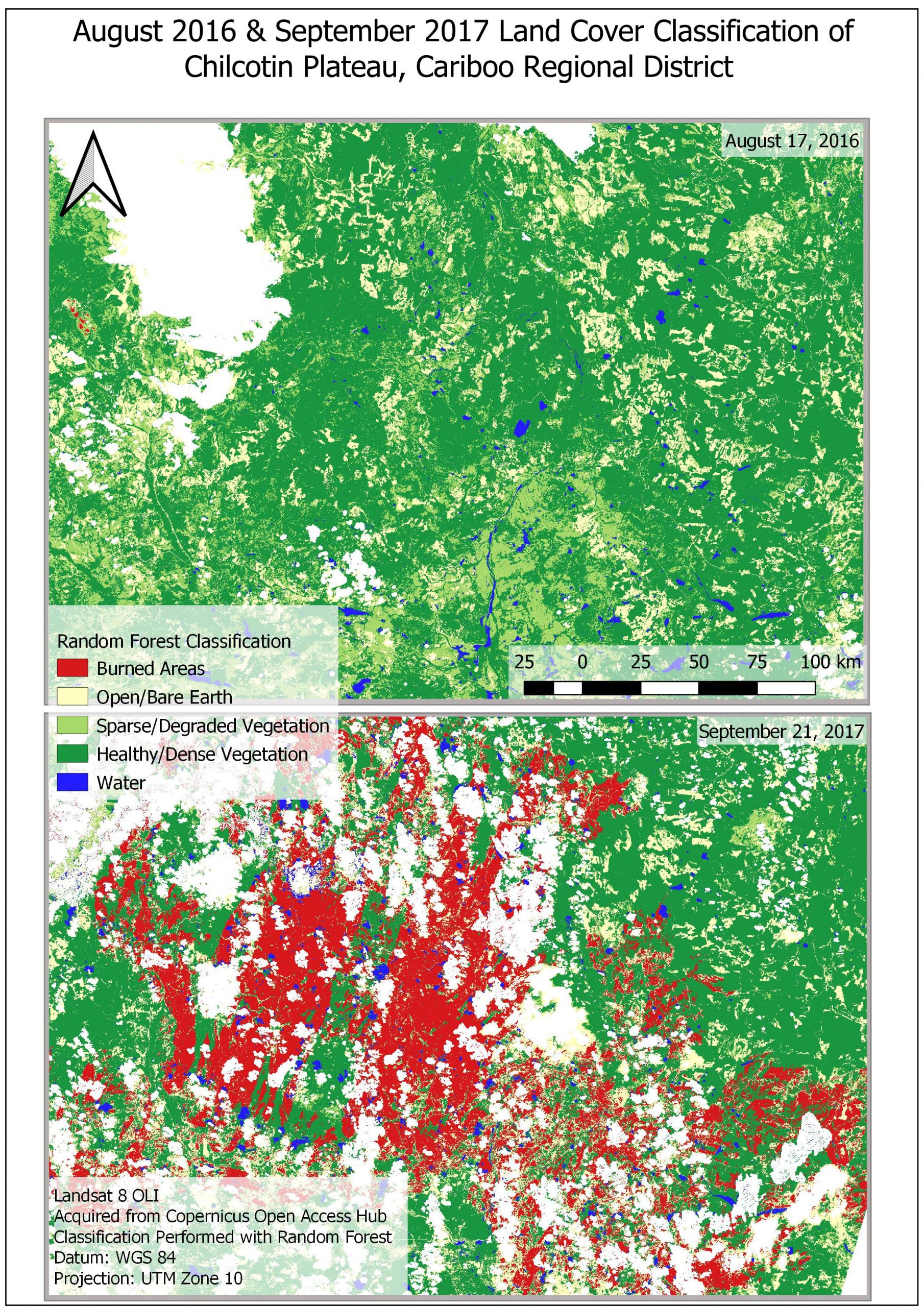Chilcotin Plateau Wildifre Analysis
The summer of 2017 marked one of the worst fire seasons in British Columbia’s history. Fires eventually covered approximately 1.2 million hectares, prompting the province to spend $649 million in suppression costs alone. Accurate analysis of post-fire areas can facilitate decision making in forestry and environmental management. Applied over a longer period, these examinations can predict forest fire behaviour and guide fire response. The purpose of this experiment is to evaluate the effects of wildfires on local landscape metrics and analyze the characteristics of change across the post-fire landscape. The 700,000 ha study area is situated southwest of Quesnel, centered on the Chilcotin Plateau fire complex which merged in July. Two Landsat 8 OLI images from August 2016 to September 2017 were analyzed to create a set of normalized difference vegetation indices (NDVIs) and a normalized burn ratio (NBR). The area was classified into five categories (burned area, bare soil, degraded vegetation, productive vegetation, water) using supervised classification techniques in QGIS. Classification accuracy
was determined using randomForest and caret in R. Landscape metrics were calculated using FRAGSTATS, and a transition matrix was produced using Modules for Land Use Change Simulations (MOLUSCE). The classification model kappa coefficient was high (.9776), and there
was a strong correlation with the NDVIs (89% and 73%). Confirmed burned areas increased by 138,695 ha, bare areas increased by 18,007 ha, and productive vegetation areas decreased by 111,246 ha. 25% of productive vegetation and 37% of degraded vegetation areas were lost to wildfires. Core area and connectivity of remaining vegetation patches dropped substantially, while total edge distance per core hectare increased. The study concludes that remaining patches of vegetation are more isolated and smaller in size with reduced core area. This can mean additional access challenges for the logging industry and increased stress on local flora and fauna.